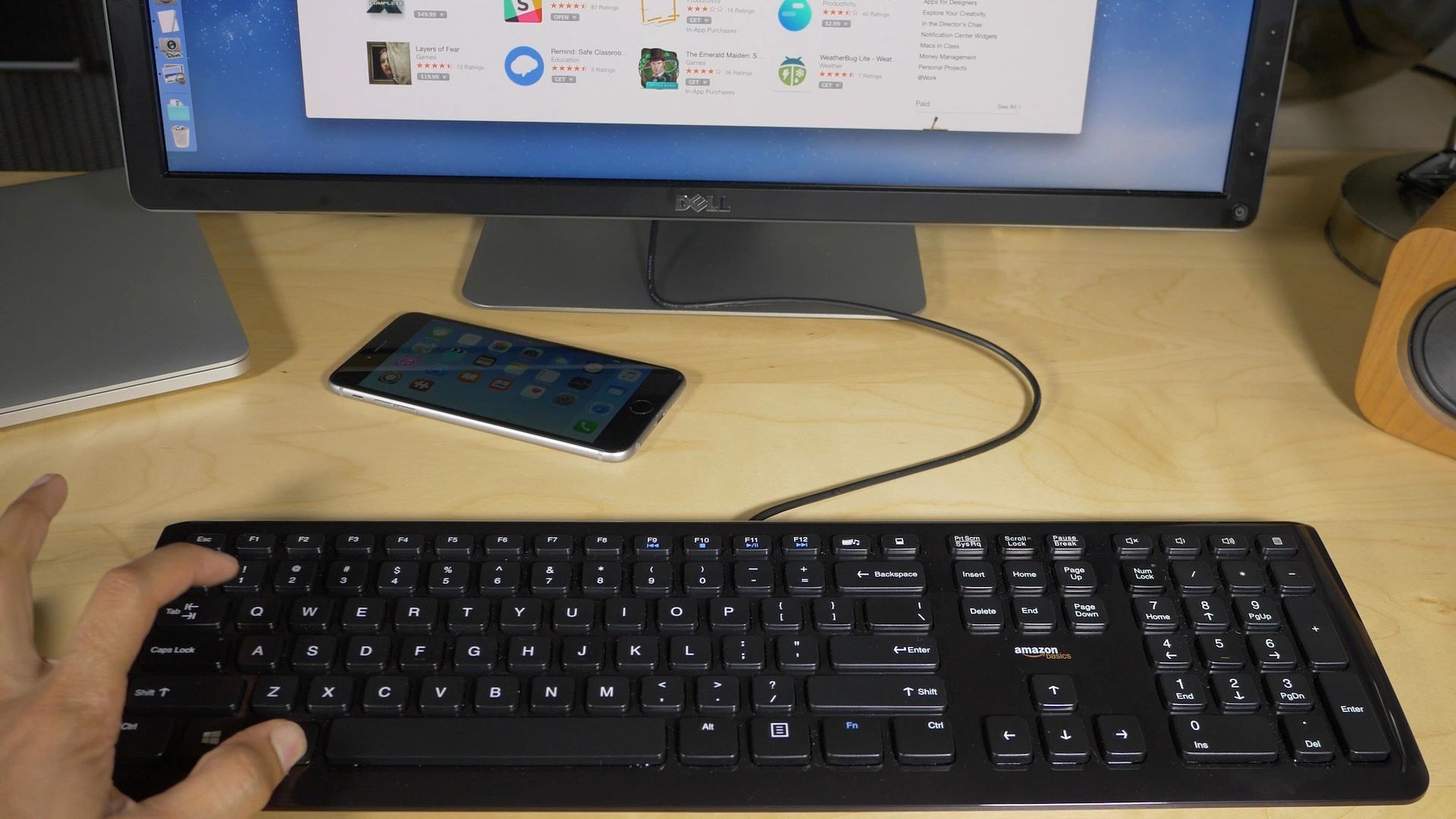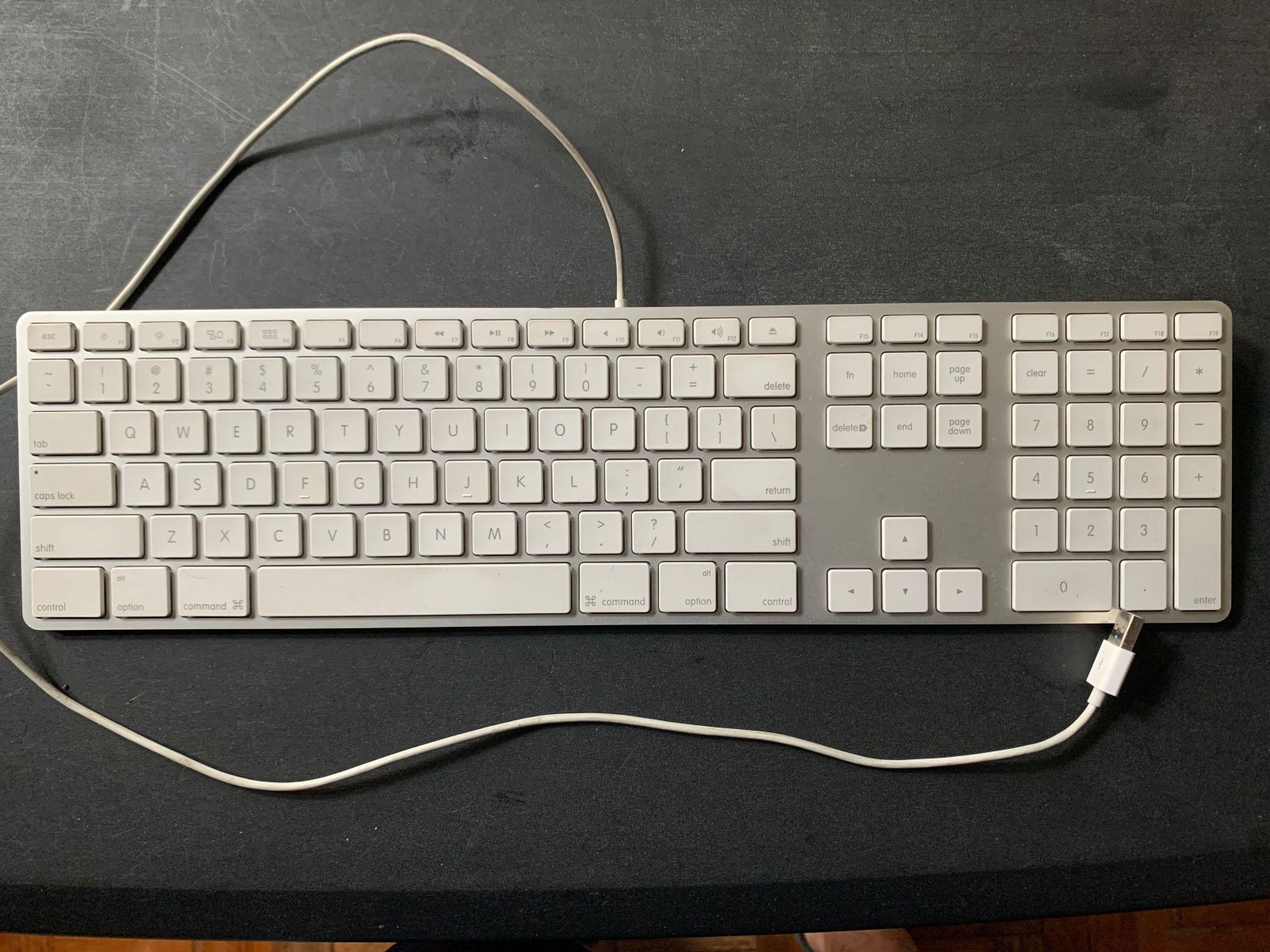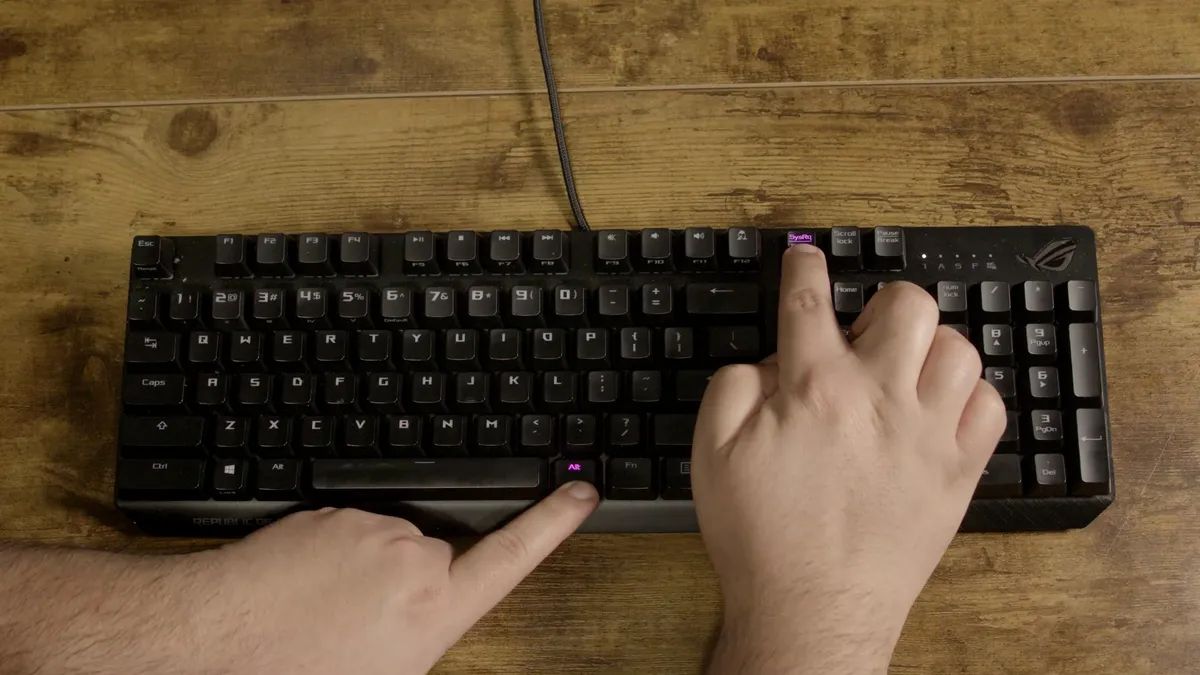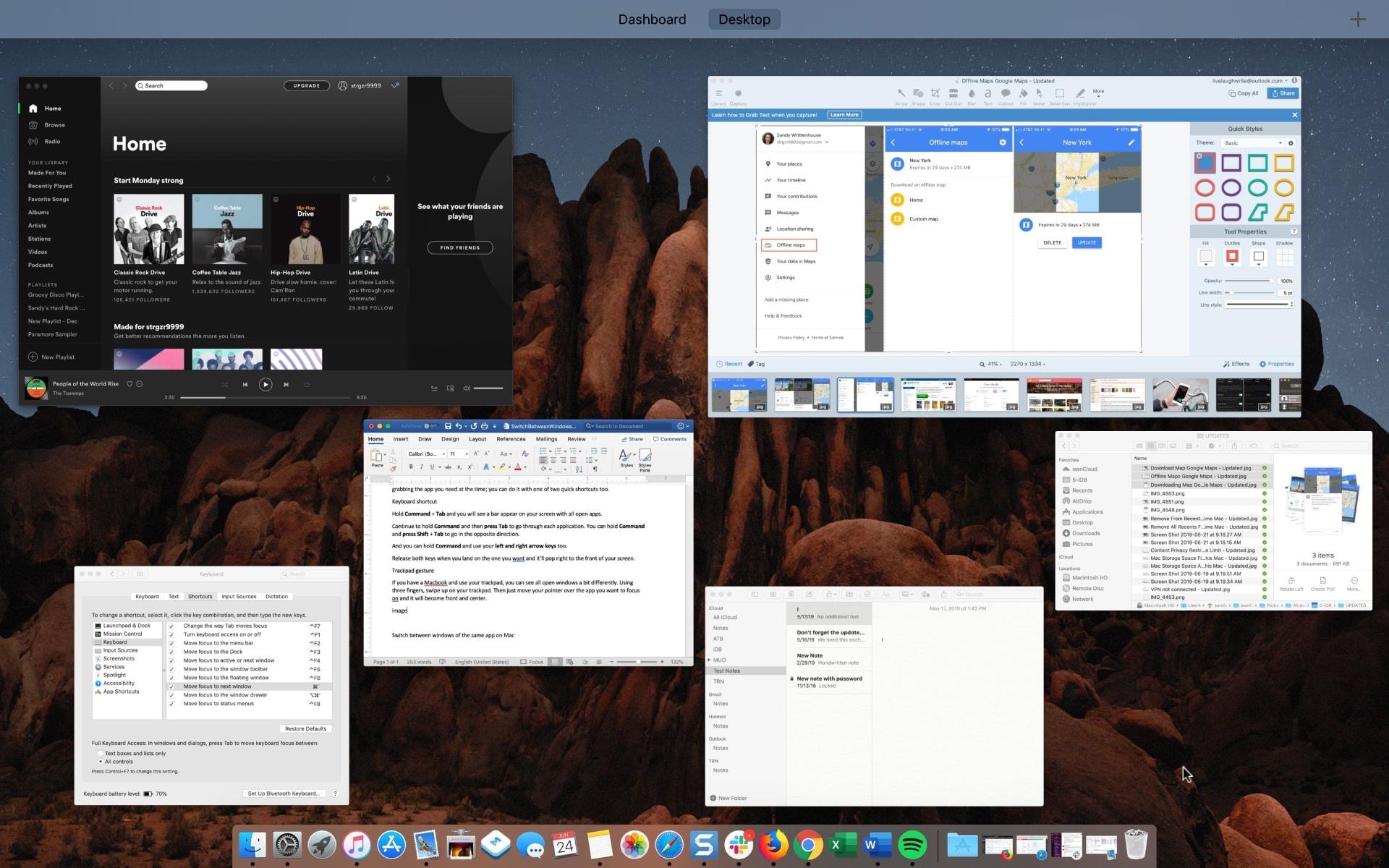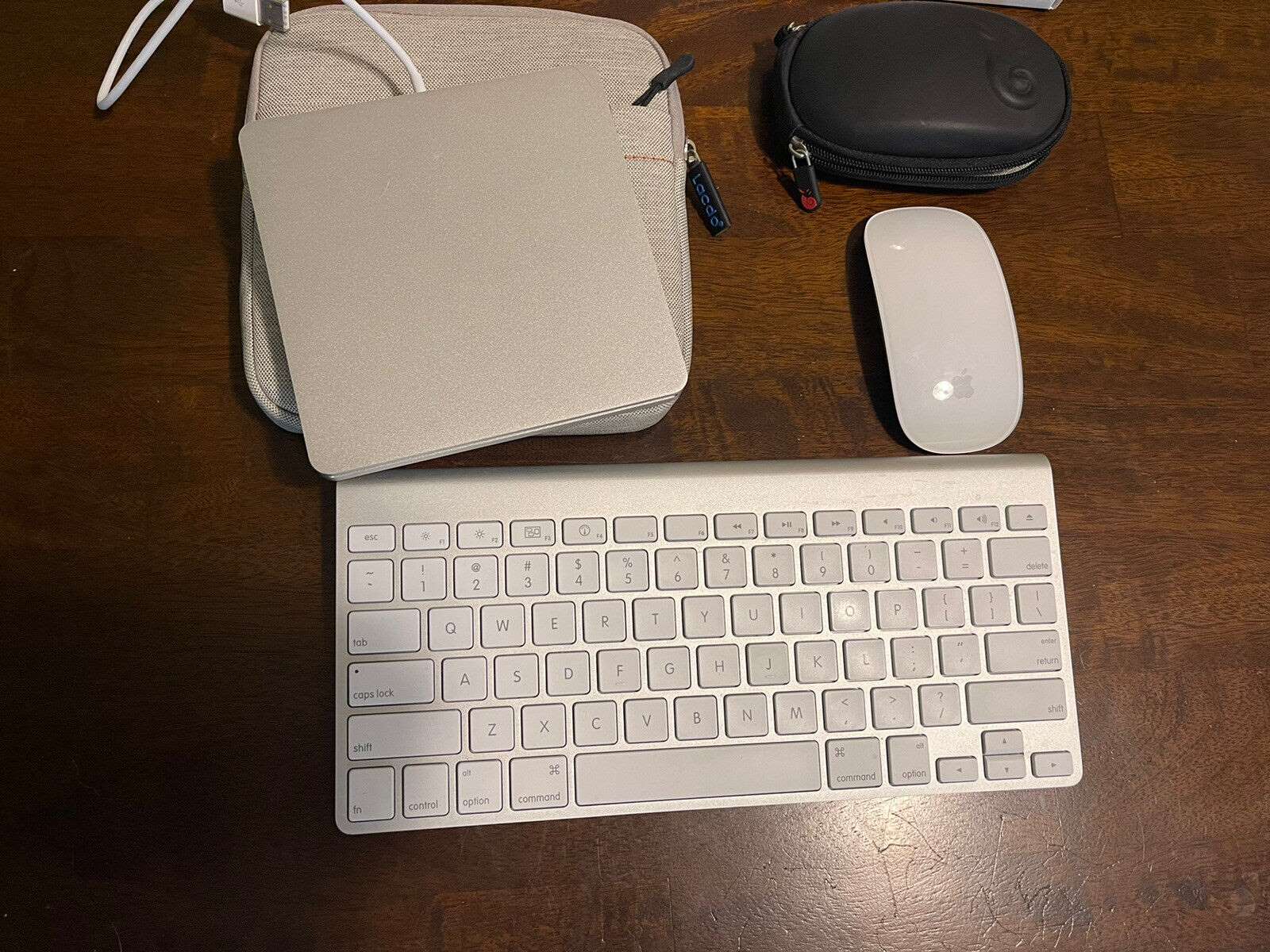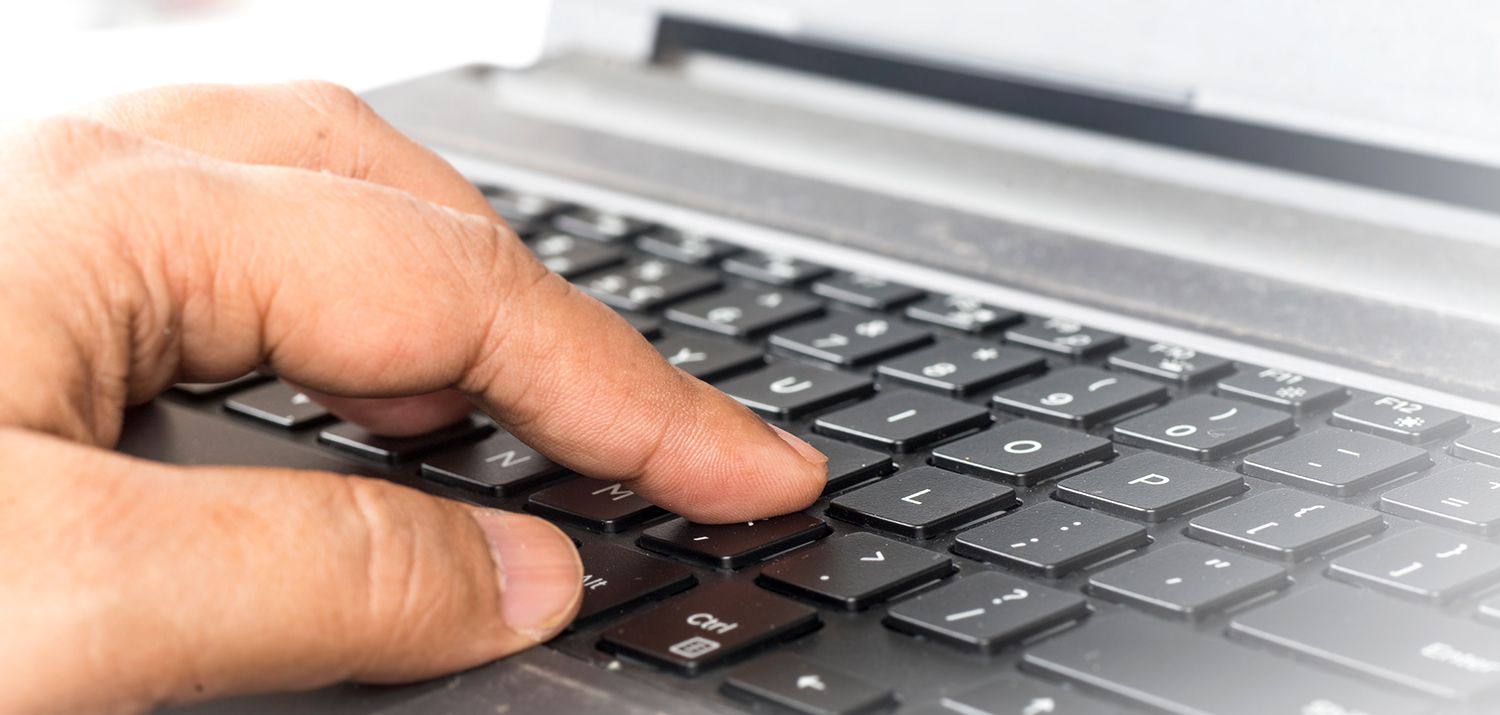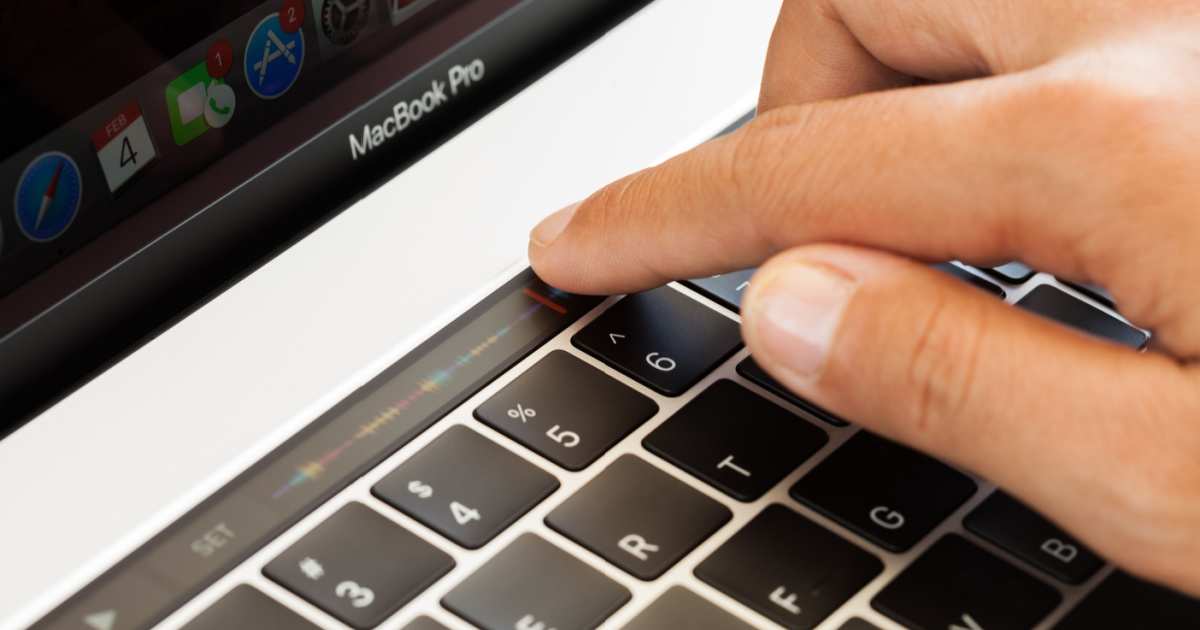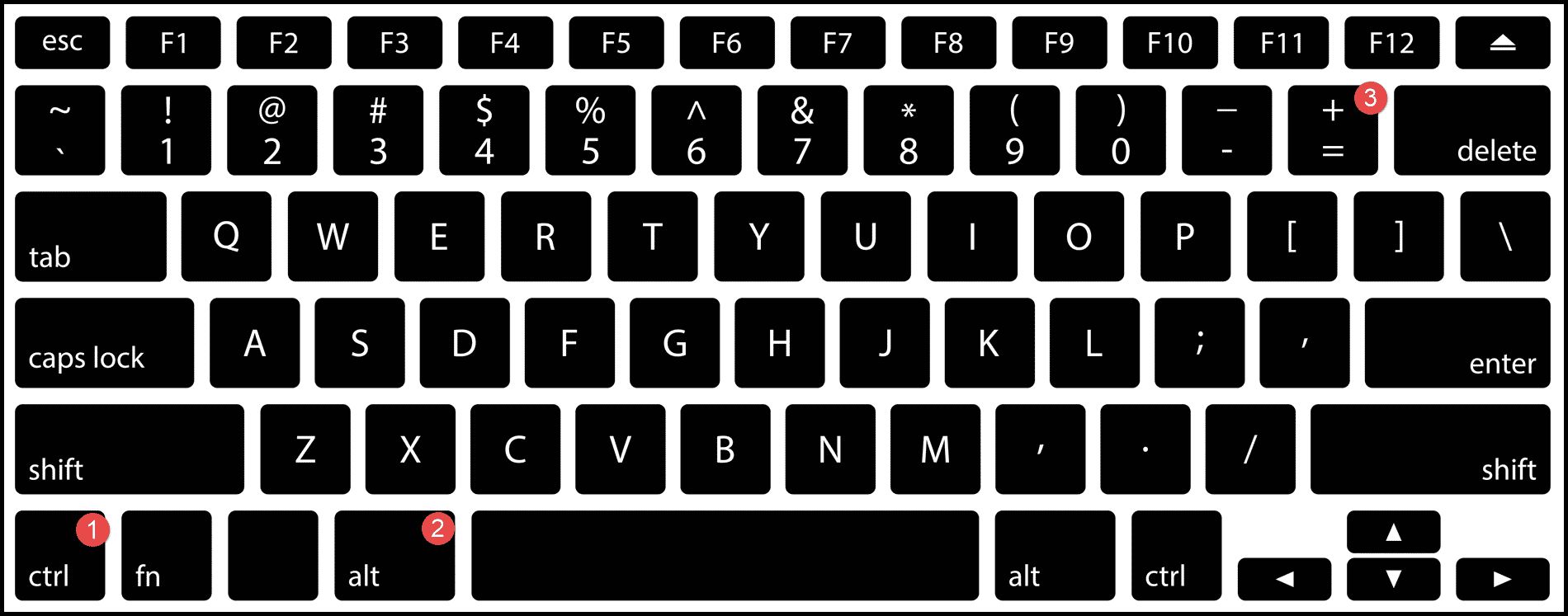Introduction
Welcome to our guide on how to use a Windows keyboard on a Mac! While Mac computers have their own unique keyboard layout, many users accustomed to Windows keyboards might find it challenging to adapt to the differences. However, with a few simple steps, you can easily enable the Windows keyboard layout on your Mac and start using familiar shortcuts and key combinations.
Whether you’ve recently switched from a Windows PC to a Mac or just need to use a Windows keyboard temporarily on your Mac, this guide will walk you through the process. We’ll explain the differences between Windows and Mac keyboards, show you how to enable the Windows keyboard layout on your Mac, and provide tips on effectively using Windows keyboard shortcuts. Additionally, we’ll explore options for customizing the keyboard layout to suit your preferences.
By the end of this guide, you’ll be able to seamlessly use a Windows keyboard on your Mac, improving your productivity and ensuring a smooth transition from Windows to macOS. So let’s get started and unlock the full potential of your Windows keyboard on your Mac!
Understanding the Differences Between Windows and Mac Keyboards
Before we dive into the process of using a Windows keyboard on a Mac, let’s first understand the key differences between these two types of keyboards. While both serve the fundamental purpose of inputting data, they have some notable variations in terms of layout and key functionalities.
One of the primary differences is the layout. Windows keyboards typically have a dedicated row of function keys at the top, while Mac keyboards place these functions in a slightly different arrangement. For example, on a Windows keyboard, the function keys F1 to F12 are aligned horizontally, while on a Mac keyboard, they are placed vertically along the left side.
Another significant distinction is the presence of the Command key on Mac keyboards. This key serves the same purpose as the Control key found on Windows keyboards, but it is positioned differently and has a distinct symbol. Similarly, the Option key on a Mac keyboard corresponds to the Alt key on a Windows keyboard.
Furthermore, Mac keyboards include specialized keys like the Mission Control key, Launchpad key, and media control keys for controlling music playback. These keys are absent on most Windows keyboards and require some adjustment for users transitioning between the two systems.
Understanding these differences is essential as it helps set expectations and ensures a smoother transition when using a Windows keyboard on your Mac. While the keys might be physically different, with the right settings and adjustments, you can easily overcome these differences and enjoy the convenience of your Windows keyboard on your Mac. In the next section, we will explore how to enable the Windows keyboard layout on your Mac.
Enabling Windows Keyboard Layout on Mac
To use a Windows keyboard on your Mac, you’ll need to enable the Windows keyboard layout. Follow these steps to switch to the Windows keyboard layout on your Mac:
- Go to the Apple menu in the top-left corner of your screen and select “System Preferences”.
- In the System Preferences window, click on “Keyboard”.
- Click on the “Input Sources” tab.
- Click on the “+” button in the bottom-left corner to add a new input source.
- In the search bar, type “Windows” and select “English (Windows)”.
- Make sure the checkbox next to “Show input menu in menu bar” is selected, then close the System Preferences window.
- You should now see a language icon in your menu bar, representing the Windows keyboard layout.
- Click on the language icon in the menu bar and select “English (Windows)” to switch to the Windows keyboard layout.
Congratulations! You have successfully enabled the Windows keyboard layout on your Mac. Now, your Mac will recognize the Windows keyboard and interpret the keystrokes according to the Windows keyboard layout.
It’s worth noting that you can switch between the Windows and Mac keyboard layouts at any time by clicking on the language icon in the menu bar. This is particularly useful if you need to use both keyboard layouts interchangeably or if you want to revert back to the default Mac keyboard layout.
In the next section, we will explore how to make the most of your Windows keyboard on your Mac by using familiar Windows keyboard shortcuts.
Using Windows Keyboard Shortcuts on Mac
Now that you have enabled the Windows keyboard layout on your Mac, you can take advantage of familiar Windows keyboard shortcuts to enhance your productivity. Here are some commonly used Windows keyboard shortcuts and their respective Mac equivalents:
- Ctrl+C (Copy): On a Mac, use Command+C to copy selected text or files.
- Ctrl+V (Paste): Use Command+V to paste copied text or files on a Mac.
- Ctrl+Z (Undo): On a Mac, press Command+Z to undo your last action.
- Ctrl+X (Cut): To cut selected text or files, use Command+X on a Mac.
- Ctrl+A (Select All): Use Command+A to select all items or text on a Mac.
- Ctrl+F (Find): On a Mac, press Command+F to open the Find window.
- Ctrl+P (Print): To print a document or file, use Command+P on a Mac.
- Ctrl+S (Save): Use Command+S to save your work on a Mac.
These are just a few examples of Windows keyboard shortcuts and their Mac equivalents. It’s important to note that not all Windows keyboard shortcuts have direct equivalents on a Mac, and some may have slight variations. Therefore, it’s a good idea to familiarize yourself with the most commonly used shortcuts and modify your workflow accordingly.
Mac computers also have their own set of unique keyboard shortcuts that can further enhance your productivity. For example, using Command+Space opens the Spotlight search, allowing you to quickly find files, launch applications, and perform system-wide searches. Additionally, pressing Command+Tab allows you to switch between open applications.
By embracing the Windows keyboard shortcuts on your Mac and exploring the native keyboard shortcuts, you’ll be able to navigate your computer more efficiently and streamline your workflow.
In the next section, we will explore how you can customize the Windows keyboard layout on your Mac to suit your preferences.
Customizing Windows Keyboard Layout on Mac
While the Windows keyboard layout is enabled on your Mac, you also have the flexibility to customize it to better suit your preferences. Here are a few ways you can personalize the Windows keyboard layout on your Mac:
- Remap Keys: If you find that certain keys on your Windows keyboard don’t correspond with their intended functions on a Mac, you can remap them. There are third-party tools available, such as Karabiner-Elements and Keyboard Maestro, that allow you to remap keys on your Mac to mimic the Windows keyboard layout.
- Adjust Keyboard Repeat Settings: By default, the keyboard repeat rate on a Mac might be different from what you’re used to on a Windows keyboard. You can fine-tune the keyboard repeat settings in the Keyboard preferences under System Preferences. Adjusting the Key Repeat and Delay Until Repeat sliders will enable you to replicate the typing experience of a Windows keyboard.
- Create Custom Shortcuts: Mac computers have a built-in feature called “Shortcuts” that allows you to create custom keyboard shortcuts for various functions and applications. You can access this feature in the Keyboard preferences. By creating custom shortcuts, you can assign specific key combinations to perform tasks or open applications, just like you would on a Windows keyboard.
- Use Modifier Keys: Modifier keys, such as Shift, Control, Option/Alt, and Command, can be customized to behave differently when pressed in combination with other keys. In the Keyboard preferences, you can explore various options for modifying the behavior of these keys to better align with your Windows keyboard habits.
By customizing the Windows keyboard layout on your Mac, you can create a more seamless and personalized computing experience. Take some time to explore the customization options available and experiment with different settings until you find a configuration that feels comfortable and efficient for your workflow.
In the next section, we will address some common issues and troubleshooting tips to assist you in case you encounter any difficulties while using a Windows keyboard on your Mac.
Troubleshooting and Common Issues
While using a Windows keyboard on a Mac is usually a straightforward process, you may encounter some issues along the way. Here are some common problems and troubleshooting tips to help you overcome them:
Issue 1: Incorrectly Mapped Keys
If you find that certain keys on your Windows keyboard are not working as expected or are mapped incorrectly on your Mac, there are a few steps you can take. First, double-check that you have enabled the correct Windows keyboard layout in the Input Sources settings. If the issue persists, consider using third-party tools like Karabiner-Elements or Keyboard Maestro to remap the keys to your desired configuration.
Issue 2: Modifier Key Confusion
Using modifier keys like Control, Option/Alt, and Command on a Windows keyboard can sometimes lead to confusion when switching to a Mac. Remember that the Command key on a Mac corresponds to the Control key on a Windows keyboard, while the Option/Alt key on a Mac corresponds to the Alt key on a Windows keyboard. Familiarize yourself with these differences, and practice using the correct modifier keys for various shortcuts and key combinations.
Issue 3: Non-responsive Keys
If you notice that certain keys on your Windows keyboard don’t seem to register when pressed on your Mac, try the following steps. First, ensure that your keyboard is properly connected to your Mac and that the cables or wireless connection are functioning correctly. If the issue persists, try restarting your Mac and reconnecting the keyboard. Additionally, check for any software updates for both your Mac and the Windows keyboard, as driver updates can sometimes resolve compatibility issues.
Issue 4: Keyboard Layout Switching
Occasionally, you may experience unexpected switching between keyboard layouts or difficulties in switching back to the default Mac layout. If this happens, check the “Input Sources” settings in the Keyboard preferences to ensure that the correct keyboard layout is selected. You can also try removing any additional input sources or language options that you don’t use, as this can help prevent unintentional layout switching.
If you encounter any other issues that are not addressed here, consider reaching out to Apple Support or referring to online forums and communities specific to Mac users. These resources can provide further assistance based on your unique situation.
Now that we’ve covered some troubleshooting tips, let’s wrap up this guide on using a Windows keyboard on a Mac.
Conclusion
Using a Windows keyboard on a Mac can initially be a challenge due to the differences in layout and key functionalities. However, with the right settings and adjustments, you can easily enable the Windows keyboard layout on your Mac, allowing you to use familiar shortcuts and key combinations.
In this guide, we discussed the key differences between Windows and Mac keyboards, walked you through the steps to enable the Windows keyboard layout on your Mac, and provided tips on effectively using Windows keyboard shortcuts. We also explored customization options and addressed common issues you may encounter while using a Windows keyboard on your Mac.
By enabling the Windows keyboard layout on your Mac, you can enhance your productivity and seamlessly transition from a Windows PC to macOS. Whether you’re a recent Mac convert or need temporary access to a Windows keyboard, these steps will help you make the most out of your hardware.
Remember to familiarize yourself with the differences and similarities between Windows and Mac keyboards, customize the layout to suit your preferences, and troubleshoot any issues that may arise along the way. Practice using the Windows keyboard shortcuts on your Mac and explore the native shortcuts available to further enhance your productivity.
We hope this guide has been helpful in enabling and using your Windows keyboard on your Mac. Enjoy the convenience and efficiency that come with using familiar tools, and make the most out of your Mac experience!







